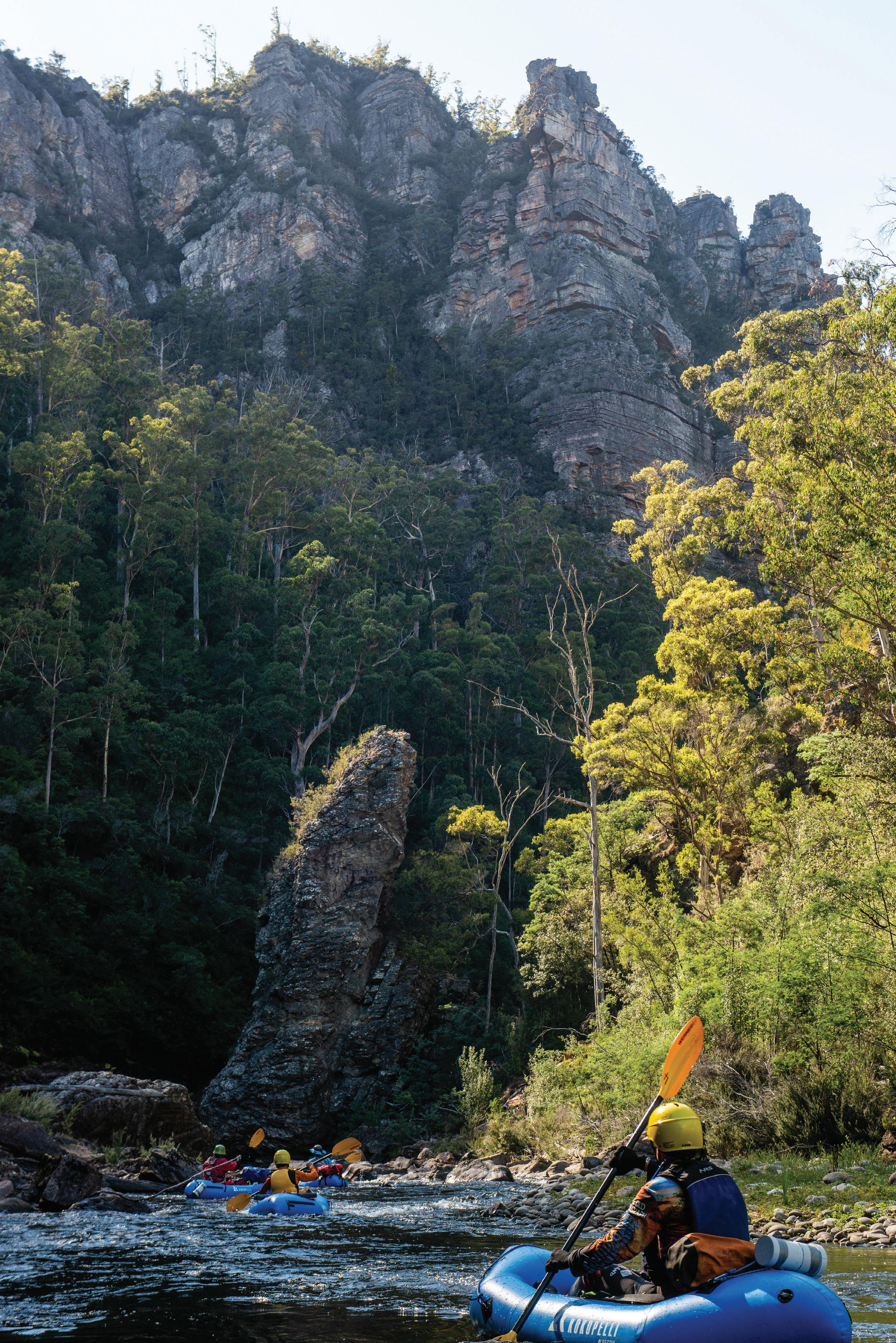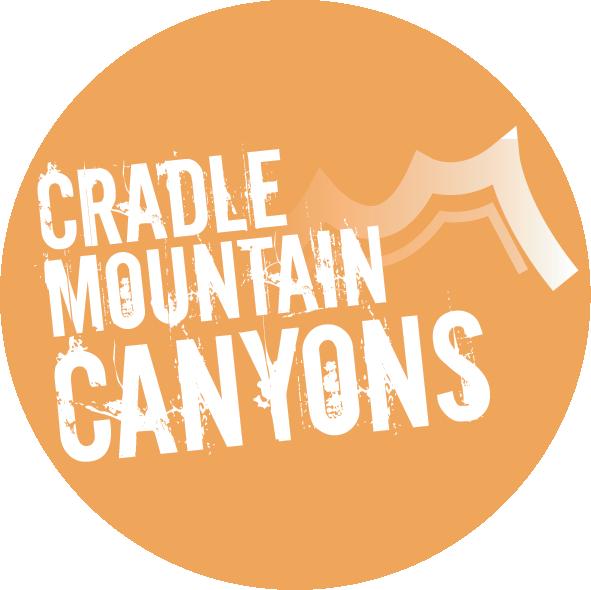
11 minute read
KNOW WHERE YOU ARE
from Wild #188
A team of stand up paddleboarders sets off to explore Greenland’s wild coastline.
Words Simone Talfourd Photography PlanetVisible
Advertisement
Istare up at the never-ending slope of ice looming large in front of us, trying to discern if I have a good or bad gut feeling. No feelings at all. As we tie the figure-8 loops into our harnesses, I find myself rubbing the tiny brown toy-horse keepsake I’m carrying in my pocket that belongs to my nephew. I am used to assessing risk, especially out on the water; I am not, however, familiar with assessing risk on ice. The uncertainty is daunting. We are remote, very remote, with a real risk of both crevasses and moulins; there is no room for error.
The ground crunches beneath our crampons as we begin the climb, one step at a time. At the crest of this hill, I stop to scan the horizon and take in what is in front of me. A plateau of white, of only ice and snow as far as the eye can see. Vast, pure, and unlike anything I have ever seen.
When we reach the lake, it is breathtaking. We stop. We are really here. After years of planning and hoping, it now lies in front of us, magnificent in its azure tranquility. Here for maybe only a moment, this moment.

WE ARE OVER HALFWAY THROUGH our Greenland adventure, paddleboarding 450km self-supported from Upernavik to Kullorsuaq. The goal is to document and share what we find, but to also pack up the inflatable SUPs and trek up onto the ice sheet in search of elusive supraglacial lakes, ponds of water that sit atop glacial ice.
For the guys, this trip has been three years in the making. It’s a dream that had long been on the horizon for both Jean-Luc Grossman and Justin Hession—an Aussie photographer now based in Switzerland. The pair are members of PlanetVisible, a photography collective whose ambition is to venture to remote places and to explore, record, and share what they experience and learn. Pascal Richard, long-term friend of Jean-Luc and Justin, joins as the third photographer.
As for me, I’d never responded to a personal advert before, let alone one from three male photographers looking for a woman to join them in a tent for a month-long excursion in a far-flung country. I didn’t really think I stood a chance, but by March I had been selected as the fourth member, acting as the journo. May marked our first in-person meeting, a weekend spent paddling and completing glacier-rescue training. And then it was July, and we were in Copenhagen Airport awaiting our second of four flights to get us to the starting point.
Greenland, the world’s largest island (sorry, Australia is a continent, not an island), is 2.16 million km2 with a population of 56,000 people. There are no roads or railway systems here; it’s the land of the dog sled and the kayak, of snowmobiles and fishing boats. A land where the polar bear still reigns supreme. Funny how within 24 hours you can go from standing in a hot shower in a cosmopolitan capital city to being stood in a small kiosk situated at the 72nd parallel discussing which gun to buy with three blokes you’ve met precisely once.
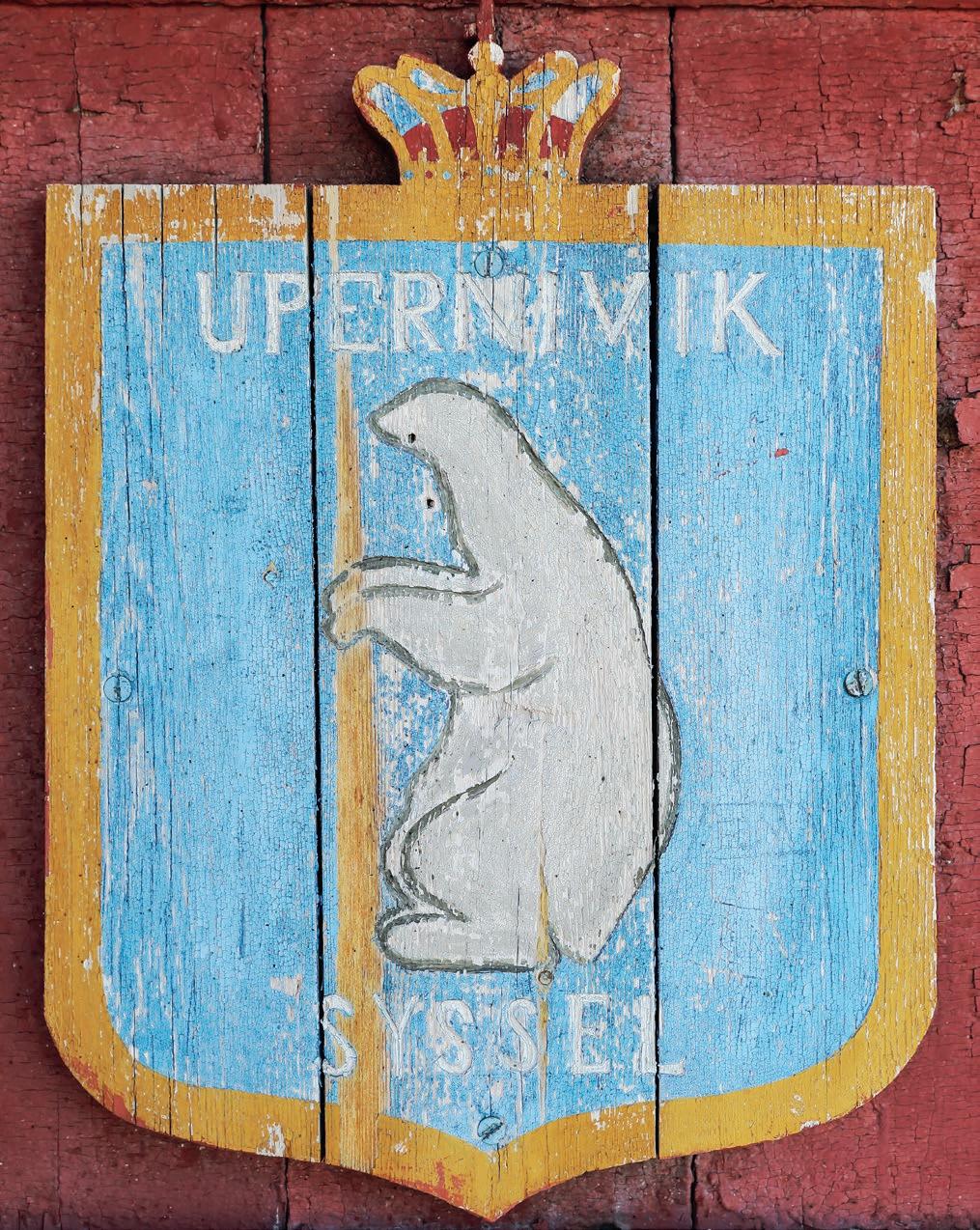
We depart without incident, using only our SUPs to carry all of our kit, all 230+kg of it, along with our newly purchased gun. The first fourteen days pass by as we travel north, weaving our way through the almost entirely uninhabited Upernavik Archipelago, camping as we go. Loading up and unpacking the boards takes longer than any of us anticipated, but we quickly fall into a routine. One evening, early on in the trip, we have a rifle-firing practice session. BANG! We aim and shoot our torpedo-like bullets into a nearby iceberg. As fun as this is, it’s unsettling to imagine encountering a polar bear out here, let alone on the water. Would we have time to get the rifle out of its dry bag? It’s unlikely we’ll see one here at this time of year, but it’s not unheard of. After all, this land is constantly changing, and the bears’ habitat is dissolving fast.
WE PADDLE CONSISTENTLY, NEEDING ONLY one rest day to hide from aggressive thirty-knot winds. Each day we cover between 20-30km over seven-to-ten-hour periods, only stopping to take pictures (for the guys) and to munch on snacks (mostly me). The camaraderie is strong, and I start to build a bond with each of them. Conditions can be intense, however. The water temperature is just above zero degrees; falling in is a worrying prospect. Even a small injury out here could carry serious consequences. The wind is variable, too, and, with frustrating regularity, is not on our side.
And the paddling at times is a real struggle. I won’t forget how, on our very first afternoon rounding Upernavik, we trudged through treacle-like water for over three hours into an aggressive headwind. As I dug my blade into the choppy
The aqua blue of a supraglacial lake. There seems to always be danger hidden in the beauty of the Arctic blue-grey waves with all my might, feet wide and fighting to not be spun left or right, I cursed and wondered how on earth I was going to get through a month of this. In fact, I wondered why I was on a paddleboard at all and why I needed to do these ridiculous things to feel good about myself. But some freshly caught cod and a good night’s sleep under the remarkable midnight sun did much to rectify this, and by morning, I was ready for another round. It is hard to do anything other than enjoy the magnitude of where we are.
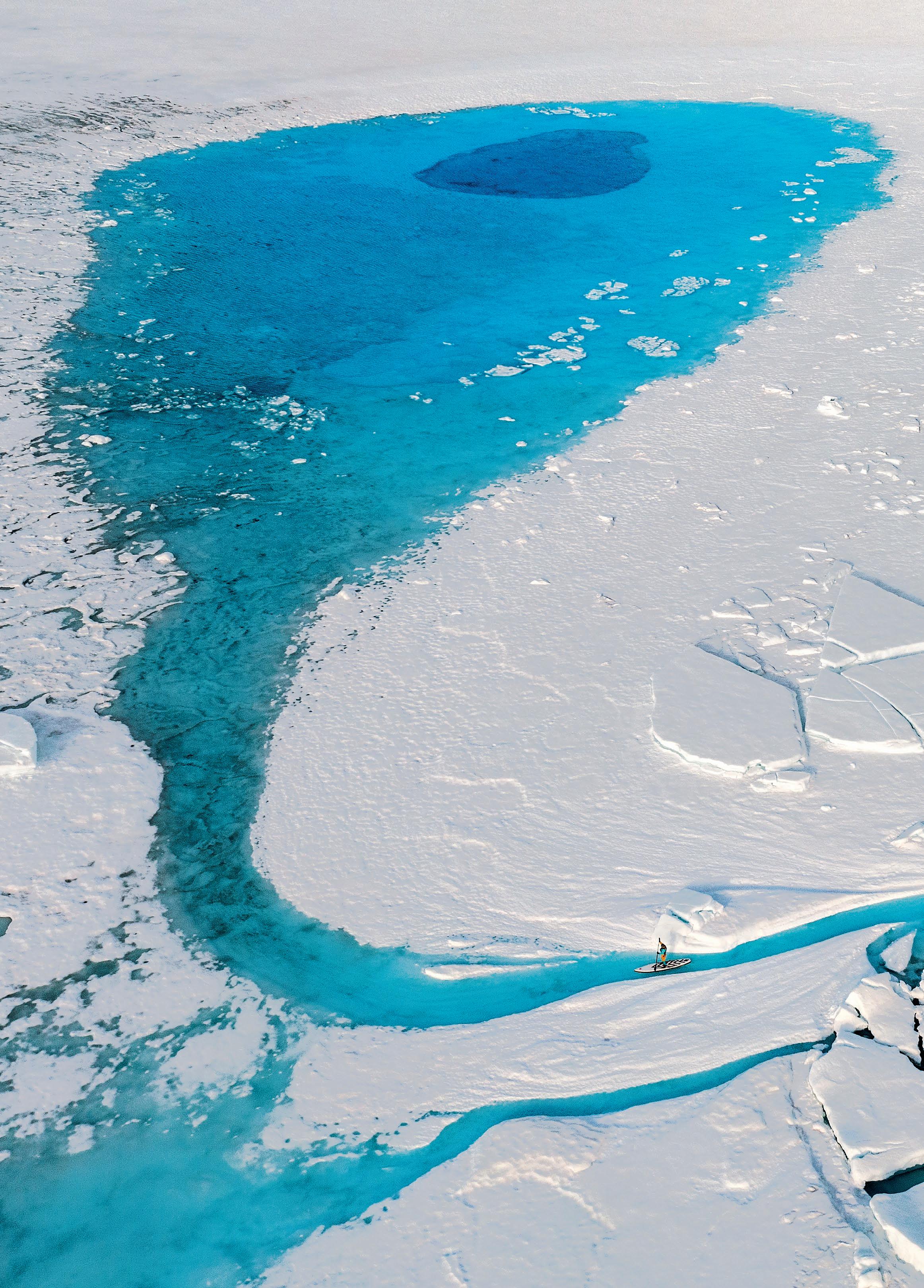
And where we are feels out of this world. The ice takes centre stage in this Tolkeinian play of life. Each day brings a new kingdom of frozen shapes to marvel at. Crumpled towers and gnarled spears rise out of the dark blue depths, dwarfing us. Huge slabs larger than stadiums surround us. Paddling between them becomes akin to a game of Grandma’s footsteps, wanting to get ever closer to fully appreciate their scale and proportions
EACH DAY BRINGS A NEW KINGDOM OF FROZEN SHAPES TO MARVEL AT. CRUMPLED TOWERS AND GNARLED SPEARS RISE OUT OF THE DARK BLUE DEPTHS. HUGE SLABS LARGER THAN STADIUMS SURROUND US.” but never too close to witness the effects of their thunderous sudden demise.
For me, the sounds the glaciers make are unforgettable. They breathe, they drip, they yawn and groan. Booming, thunder-like rumbles echo between the landmasses, warning you that nature’s greatest shapeshifters are collapsing nearby.
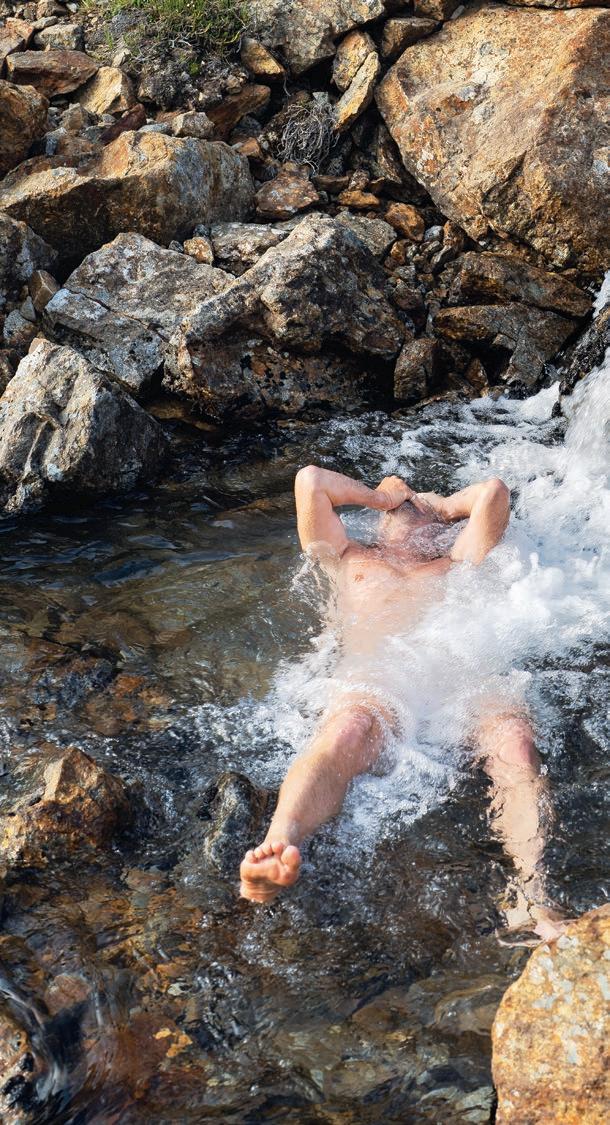
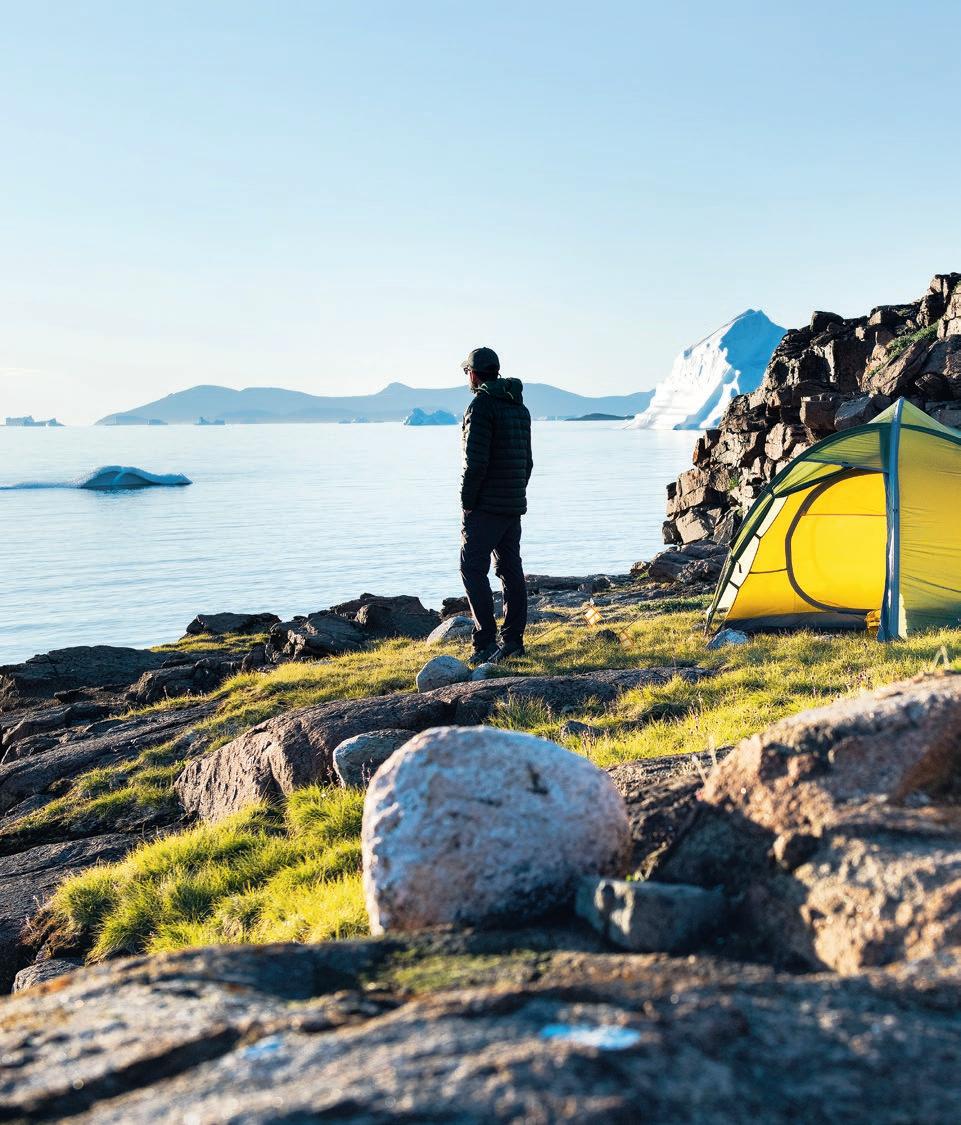


Staccato ‘cracks’ announce almighty chunks are plunging into the water below, causing metres-high waves that mercifully disperse quickly. When this happens often, the shards of debris fizz and crackle like rice bubbles at breakfast.

The icebergs, too, are unpredictable beasts. They lean and lurch, tipping and turning at a moment’s notice. But not all icebergs on our route are ferocious giants. We cross a number of seven-kilometre-plus wide fjords entirely full of shattered ice, solid meaty lumps of every frozen shape and size that we must push our way through to get to the other side, always trying to avoid the ones that look likely to tip, dip, roll or fall over. At times like this, polar bear jokes are made with more regularity as we nervously scan the sea of drifting ice, mush, mush.
And then we are standing at 600m above sea level, alongside a supraglacial lake on the Greenland ice sheet. We are full of awe, excitement, and wonder. This is the other half of the dream—to trek up onto the ice sheet and find one of the largely unknown meltwater lakes, elusive because they can drain in a matter of hours but can also last for months. In summer, they appear on the surface, reaching kilometres in diameter and several metres in depth. Their formation is driven by temperature, topography and
IMAGES - CLOCKWISE FROM TOP LEFT
Dream paddling conditions in a calm sea
When the sea was full of ice, it was good for the team to stay close in case a board suddenly sprung a leak
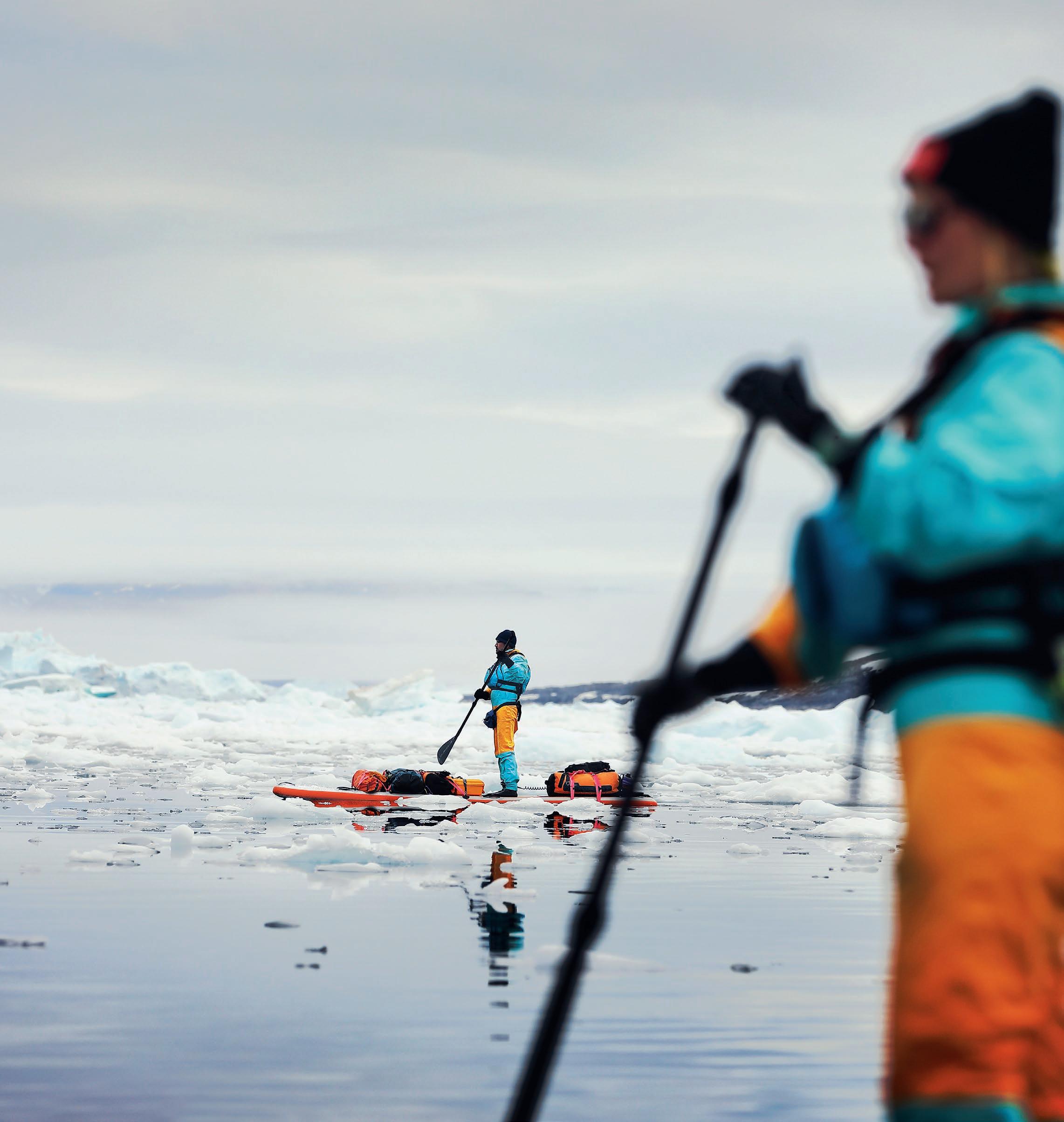
Taking care of hygiene in the meltwater straight off the icesheets. It was good for the senses, too
Traditional Inuit house in Kullorsuaq
Every day supplied luxury camping sites with a sea view elevation, and they can store vast amounts of fresh water. Unsurprisingly, their increased presence is linked with climate change.

This particular lake sits nestled in the snow, with only a small ripple-like stream at one end snaking its way out, searching for an exit to the depths below. We stand— at what we had decided was a safe distance from the edge—looking at it, analysing what appears to be a large, ominous, dark-blue speech bubble-shaped circle sitting in the middle of the lake.

“Does anyone want to try and go out onto the lake?” Jean-Luc asks tentatively.
“I’ll go,” I say.
It is instinctive. I’m not a photographer; it makes sense for it to be me so that the others have someone to capture. It is their dream. I stride towards the lake carrying the board, sinking comedically with every giant pantomime step into the slush and ice, thigh-deep in places. Meanwhile, I keep my eye on this curious cobalt porthole resting at the bottom of the lake like a cavernous sinkhole.
I reach the edge, clamber onto the board, and push off. Slowly, I draw my blade through the serene water. The sun breaks through the clouds, and I am struck by what feels like electric energy surging through me. I must be the luckiest person in the world. It’s a spiritual moment, one that I know will shape my life. We descend back, jubilant. The terrain is tough going and challenging—there’s a river to cross, giant boulders to scramble over, soggy moss to sink into, and loose rocks under our feet. It’s a constant battle to not stumble, skid, slip, or roll an ankle. I look forward to getting back to the paddling.
DURING THE FINAL WEEK, WE JOURNEY NORTH through more ice and rocky islands; the latter are now getting snowier and steeper. Our days have a routine. Eat breakfast. Pack up camp. Wriggle into sodden booties and banana-coloured drysuits. Fill up water bottles. Access snacks. Load up the boards. Strap everything down firmly. And then push out into the unknown for another spectacular day.
Not many people ever get to paddle on a supraglacial lake. It came with dangers, of course, but we thought it was worth the risk. It was only a metre deep, and was so clear it was hard to distinguish the water. It felt like floating on a magic carpet. The darker middle section was a little unknown. We hadn’t seen anything like this in our research. It didn’t seem to be draining, which was a good sign, but it looked menacing
Twice we have our paths blocked by the sheer volume of pack ice, and we’re forced to re-route around peninsulas. This adds more kilometres, and it means we have to face the open ocean on one side. The terrain—a mixture of lichen-licked rock and now snow-capped peaks—is barren and unforgiving. It’s impossible not to be humbled by the sheer remoteness of where we are.


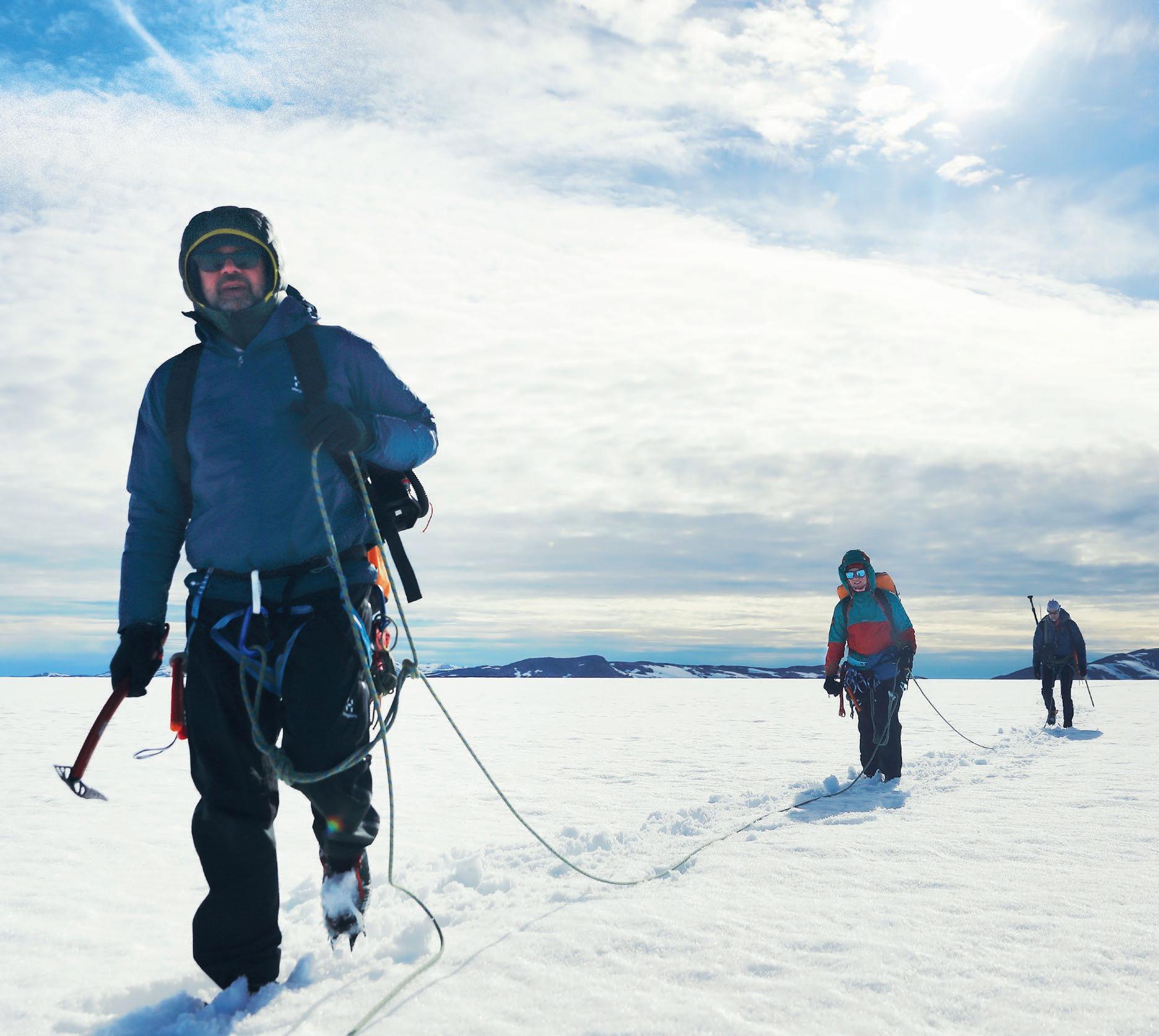
Disappointingly, we see no whales. We do, however, see (and occasionally startle) many ducks and ducklings. Other birds we see include the northern fulmar, and, towards the end of our trip, Arctic terns. They resemble beautiful, big, white swallows, ducking and diving around us. One memorable interaction is with a sleeping seal. Jean-Luc and I paddle right up against him, believing he is dead. But then we see a couple of bubbles emerge. He looks up at us wide-eyed and in shock, and then dramatically shoots to the sanctuary of deeper water.
The only people we encounter on the water are fishermen in search of a seal to shoot or to fish for halibut, often on lines up to half a kilometre long. Earlier on in the trip, we came across some young fishermen from Nuussuaq, a small town of less than 200 inhabitants we would later visit after twenty days out on the water. Impressed by their English in a land where it isn’t always spoken widely, we asked where they learned it.
“From YouTube and movies,” said one.
“I love Dark Knight,” said another.
It’s another amazing way of how the internet has changed—and continues to change—the world.
WE PADDLE INTO KULLORSUAQ, OUR ENDPOINT, subdued and happy. Founded in 1928, and with roughly 450 inhabitants, Kullorsuaq is the Upernavik Archipelago’s northernmost settlement, and is one of Greenland’s most traditional hunting and fishing villages. As we stand at the heliport, all packed up, awaiting our flight back to Upernavik, we’re told the helicopter isn’t coming anymore. Later, we learn that the pilot was a mere ten kays away, however thick fog meant landing was impossible. We stay four more days, waiting to begin our journey home, never with any certainty when our trip will be over. It is an exercise in patience for all of us, and a lesson in control for me. In our daily lives, we are used to having control; here, though, you are second to nature. The landscape and the elements dictate and shape your life. You are small and insignificant.
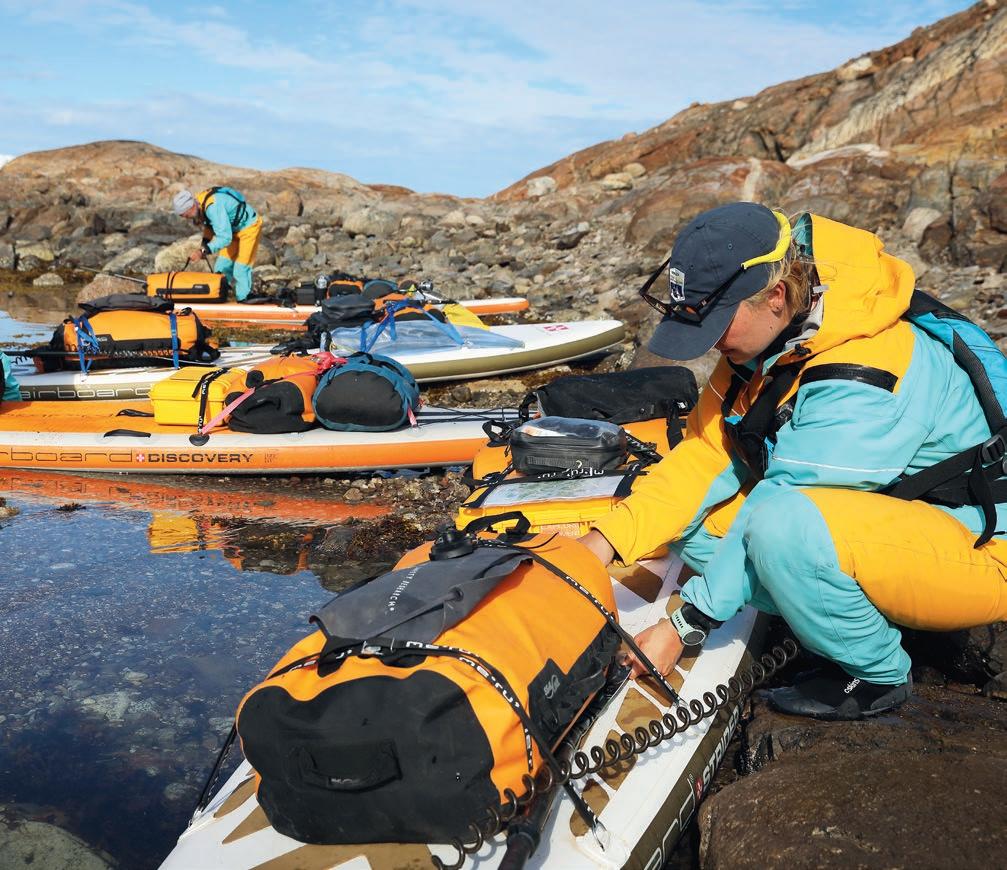
IMAGES - LEFT TO RIGHT, TOP TO BOTTOM
Avoiding the crevasses and moulins, we were roped up the whole time on the ice sheet
The most common wildlife that followed us daily
A perfectly preserved urchin shell
It looks very different from above as we negotiate our way through the bergs
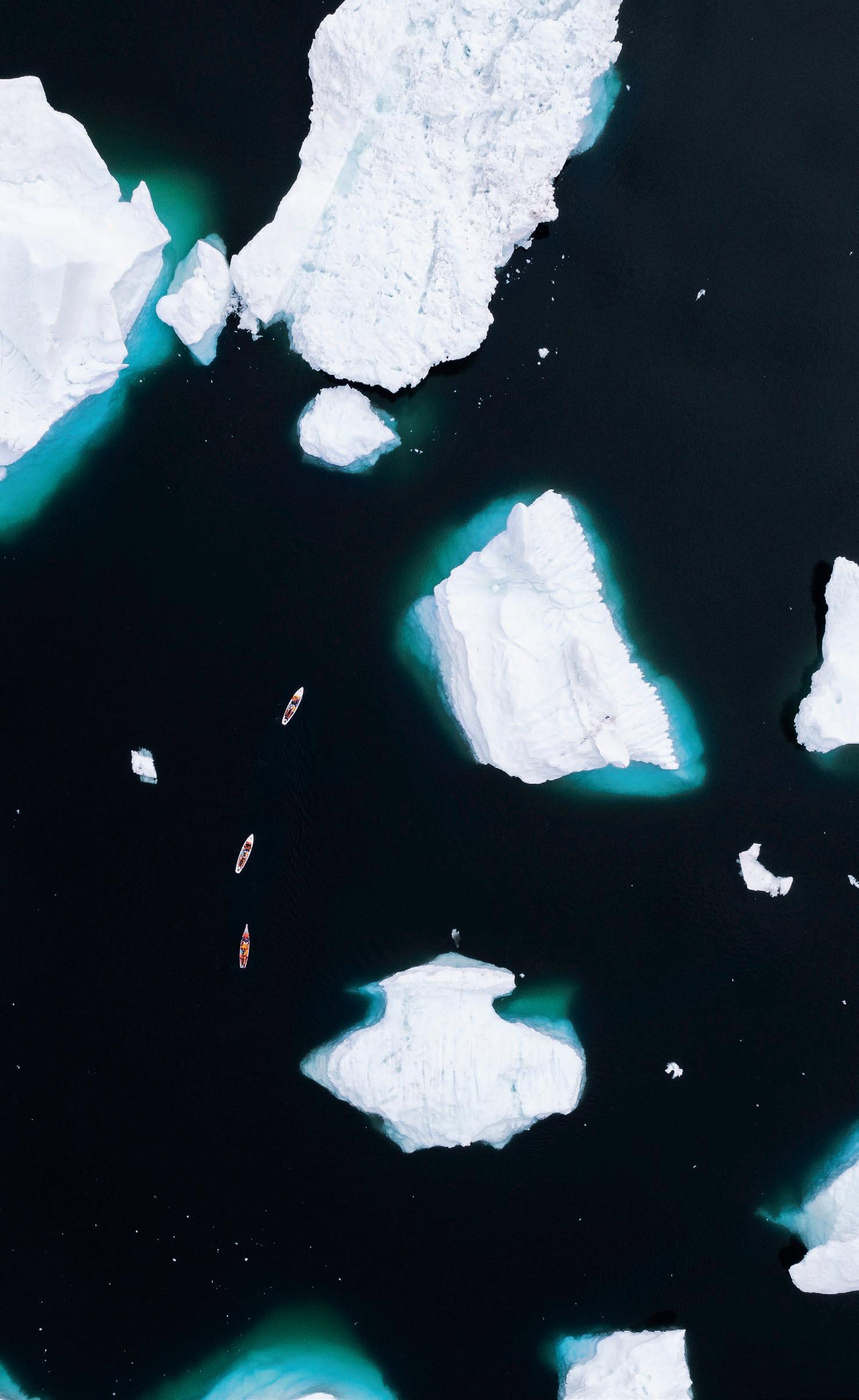
The morning packing: It took 2 hours every day from waking up to pushing off
Incredible iceberg sculptures entertained us the whole trip

Despite it being summer, when the sun dropped to the horizon, it got cold quickly
What a dream it was to spend four weeks paddling through icebergs, especially when they were fantastically shaped like this one
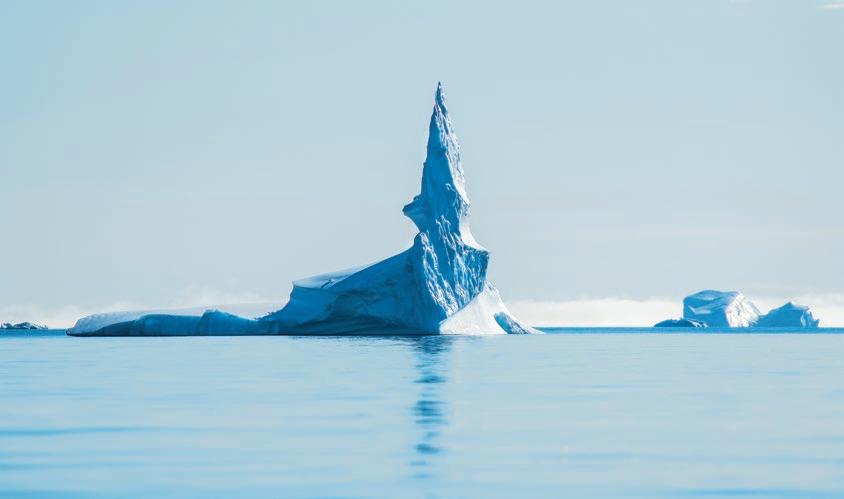

When it was calm and the waters were mirrored, paddling here was simply unreal
Greenland is a place of extremes. Of either endless daylight or months of darkness. Of ice and snow, cold and even colder. The great paradox of being out here in this frozen wilderness is that what could kill you is also what keeps you alive. Environments like this sharpen your synapses, and remind you that our brains are hardwired to help us survive. You’re forced to constantly measure risk versus reward. This hostile land keeps us alert and ignites that fire in our bellies. It’s the addictive side of getting out of your comfort zone, the true thrill of enduring the elements while being able to experience one of the most remote places on earth. We learn to be comfortable with being uncomfortable. We choose to do this.


And that’s why I replied to the advert, and why I need the challenge of a trip like this: to allow myself to feel that my energy is being completely used. To quieten the deafening clamour of everyday life, to find stillness, to switch off the noise we don’t need.
Early on in our trip, Jean-Luc mentioned a proverb his father used to say: “It’s better to know where you are without knowing where you’re going than to know where you’re going without knowing where you are.” W
CONTRIBUTORS: Simone Talfourd is a writer, podcast producer, and host, and is currently working on a memoir about her record non-stop row around the UK. Justin, Jean-Luc and Pascal are members of PlanetVisible—a small, like-minded and flexible photography collective based in Zurich working on creating positive, powerful visual stories. Check out their work at planetvisible.com
